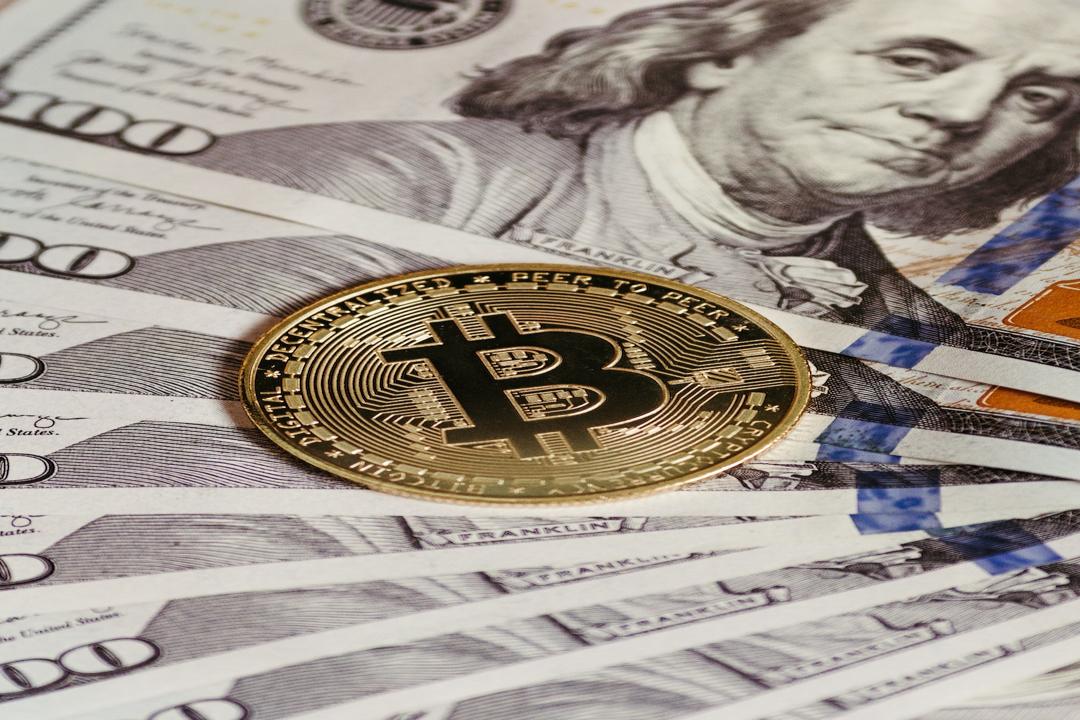Rethinking “Long-term Investment,” “Short-term Trading,” “Volatility,” “Greed,” and “Fear”
The success of a new technology, the acceptance of a new asset, and the viability of a new industry all require time to prove. In 2008, Satoshi Nakamoto, the creator of Bitcoin, published a paper titled “Bitcoin: A Peer-to-Peer Electronic Cash System,” which gave birth to blockchain technology and the first cryptocurrency, Bitcoin (BTC). Since then, Bitcoin has been through 16 years of ups and downs. Since I entered the blockchain industry in 2013, I have heard the phrase “Bitcoin is dead” countless times, and these discussions always repeat themselves between bull and bear markets.
However, regardless of how many times Bitcoin has “died” in the eyes of many, looking back at its history, its value has always been on a “continuous upward trend in volatility.” However, in the first ten years of Bitcoin’s existence, it was difficult to prove this due to a lack of sufficient supporting data. Many people also highly doubt the narrative that Bitcoin is digital gold and do not believe it has the same value storage function as gold.
We may never have the opportunity to go back thousands of years, but did gold also go through such questioning, debate, and even attacks before becoming the contemporary monetary role it is today? Gold opened the door to human monetary civilization, and Bitcoin has opened the door to a new monetary civilization. Perhaps we are fortunate enough to truly experience this unique era of human monetary history.
With the approval of Bitcoin and Ethereum futures ETFs in the United States, countries gradually entering the era of heavy regulation, the election of Donald Trump, who is seen as pro-cryptocurrency, as the President of the United States, and Switzerland considering including Bitcoin in its national reserve assets, it has repeatedly proven that the new technology, industry, and assets brought about by the advent of blockchain are an irreversible trend that cannot be ignored. Everyone has started discussing and being curious about it, and inevitably, they are influenced by it.
There are still many areas worth exploring in the practical application of blockchain technology. Its first successful application is cryptocurrencies, and after more than a decade of development, investing in cryptocurrencies has gradually become a visible practice and a choice for asset allocation. This moment is the best time for us to rethink “long-term investment,” “short-term trading,” “volatility,” “greed,” and “fear.”
These five terms are not unfamiliar to us, and we often hear them in the traditional financial field because finance is finance, and it does not change human behavior and market operation methods based on different investment targets. However, when investing in cryptocurrencies, the meaning of these five terms may vary for each individual. As investing in cryptocurrencies becomes a visible practice, it is worth spending some time to reflect on their underlying meanings.
Dispelling the Myth: Both “Long-term Investment” and “Short-term Trading” Are Equally Important
Most people hold a neutral view on “long-term investment” and consider it a positive investment behavior. However, regarding the term “short-term trading,” most people still have a negative view and perceive it as speculation, a way to profit from clever tactics.
This is actually a common misconception. In a financial market, “long-term investors” and “short-term traders” must coexist to ensure the normal operation of the market.
Short-term traders: Creating Market Liquidity
“Short-term trading” and “high-frequency trading” mean “seizing opportunities” and “grasping opportunities.” They refer to frequent buying and selling within a short period to profit from price differences, where opportunities arise, and trading is relatively frequent.
Taking the familiar Taiwan stock market as an example, according to Yahoo Finance, 40% of the total trading volume in the Taiwan stock market in 2023 is contributed by day traders.
What is day trading? It is the abbreviation of “day trading and settlement,” meaning completing the buying and selling of stocks within the same day without holding the stocks until the next trading day. The purpose is to profit from price differences. It is a short-term trading technique in stocks.
This 40% figure has inspired me in many ways. Any trading of goods requires both buyers and sellers to complete a transaction. In the Taiwan stock market, whether buying a whole share or a fraction of a share, transactions can be completed quickly, and a significant reason behind this is the 40% day traders, who provide significant market liquidity. Therefore, investors and pure traders coexist. Only when both exist can a complete and efficient trading market be constructed. There is no superiority or inferiority between the two.
Long-term investors: Believing in the Long-term Value of Assets
Investors believe in the value of certain assets or companies and their future development. Therefore, they invest their funds to support the long-term development of these projects. Generally, they do not engage in frequent buying and selling in the short term.
Taking Taiwan’s stock market as an example, investors who believe that TSMC (Taiwan Semiconductor Manufacturing Company) will continue to play an important role in the AI era regularly invest in TSMC stocks through a dollar-cost averaging strategy. They participate in the company’s growth and profit sharing through long-term holding.
For Bitcoin holders, they believe in the value of Bitcoin as digital gold. Therefore, they continuously buy Bitcoin through a dollar-cost averaging strategy to participate in Bitcoin’s long-term growth.
The difference between “pure traders” and “investors” is that traders do not necessarily need to believe in the long-term value of the commodities they trade. They only need to find suitable trading targets to execute buy and sell trades and profit from their trading strategies.
For general long-term investors, they usually value long-term value. Frequent volatility represents risks and instability for long-term investors.
Neutral View on “Volatility”: Some Profit from Fluctuations, Some Wait for Upward Volatility
The cryptocurrency market is different from the traditional financial market. It currently lacks a comprehensive listing review mechanism similar to the stock market to guarantee the quality of assets. It has not established systems such as price limit mechanisms, circuit breakers, or fixed trading hours.
Therefore, it is common for the prices of many cryptocurrencies to fluctuate by up to 30% to 40%. We do not deny that these characteristics have indeed caused many chaos in the early market and have created negative impressions, leading people to believe that this is not a “good thing.”
However, if we set aside so-called “air coins” (cryptocurrencies without real value and application background), there are still some assets in the cryptocurrency market that have undergone early market tests and gradually matured, such as Bitcoin and Ethereum.
These assets have experienced extreme fluctuations of 30% to 40% in a single day, but as the market gradually matures, the overall price volatility has significantly decreased due to the expansion of the market capitalization and improved trading efficiency. Although they still belong to the category of high volatility compared to traditional financial assets, it does not mean that Bitcoin or Ethereum are purely speculative commodities, nor does it mean that they will always maintain high volatility in the future.
In fact, “volatility” is a neutral concept, and its meaning depends on different market participants and strategies.
Traders: Utilizing the High Volatility of Cryptocurrencies
For traders, the high volatility of cryptocurrencies provides opportunities for arbitrage and quick profits.
Without the participation of traders in short-term and high-frequency trading, the market cannot quickly respond to various short-term, medium-term, and long-term bullish or bearish information, leading to a reduction in market efficiency. An inefficient market cannot fully meet the needs of long-term investors. Therefore, the relationship between volatility and market efficiency is precisely the key driving force behind market growth and maturity.
Long-term investors: “Steadily Rising in Volatility” Does Not Affect Long-term Profit
For long-term investors, volatility provides space for gradual entry and exit to realize investment value.
Cryptocurrencies have many categories, and it is difficult to generalize. However, the cyclical nature and value storage function of Bitcoin have been tested multiple times, making it a highly referenceable investment target for investors.
Looking at the data from the past 16 years, although Bitcoin has experienced periods of high volatility, with fluctuations of 30% to 40%, the overall market capitalization and price have been steadily rising in volatility. Therefore, for long-term investors, Bitcoin is also an excellent investment target.
Due to Bitcoin’s unique cyclical nature, such as the “Bitcoin halving” that occurs every four years, long-term holders of Bitcoin have a high success rate in their investments. This concept is similar to investing in gold.
Even if the price of Bitcoin falls in the short term, according to its characteristics, it will eventually reach new highs. Time has proven the value of Bitcoin and its position as “digital gold.” As long as long-term investment is grasped, there is no need to excessively monitor daily prices. Bitcoin is actually very suitable for long-term investment.
What is “Bitcoin halving”? It refers to the halving of block rewards that miners receive on the Bitcoin blockchain every four years. By gradually reducing the supply of Bitcoin, it aims to control inflation. This rule was written in the code by Bitcoin’s creator, Satoshi Nakamoto, when designing the Bitcoin mechanism.
Fighting Greed and Fear: Understand Yourself and Determine How Much Risk You Can Tolerate
As cryptocurrency investments become a visible practice in 2025, the most crucial step in the face of greed and fear is to first understand yourself, comprehend “investment,” “trading,” and “volatility,” and reevaluate your investment goals, personality, and risk tolerance.
Otherwise, if you claim to be a long-term investor but constantly hold your phone, closely monitor prices, even frequently trade based on price volatility, buying high and selling low, losing sleep due to price fluctuations, then you are not a long-term investor. Conversely, if you are a trader, you will always monitor various market opportunities, make good use of tools that can help with trading, adhere to discipline and rules, and accurately set stop-loss and take-profit levels.
Investment and trading are not mutually exclusive choices. Most people actually have both needs. At this time, proper asset allocation must be made. In the new year, if you intend to invest in the cryptocurrency market, you can allocate a portion of your funds for regular and long-term investment through dollar-cost averaging. Another portion of your funds can be used for short-term trading or to profit from specific financial instruments.
Finally, regardless of your investment plan, I strongly recommend that everyone take some time to get to know and understand Bitcoin (BTC) and Ethereum (ETH) from scratch. These two underlying technologies are essential in the blockchain world. I also recommend referring to the free XREX Academy blockchain foundation course. Through four weeks of courses, you can systematically establish the correct introductory knowledge.
If there is insufficient understanding of Bitcoin and Ethereum, it is challenging to have a deeper understanding of buying and selling virtual financial products. However, with sufficient knowledge, you can consciously know what you are buying, selling, why you make money, and why you lose money. When cryptocurrency investments become visible, we must clearly distinguish whether we are “investing” or “speculating.” In the “volatility” of the market, we must understand the role we play. Through these reflections, we can confidently resist all forms of greed and fear and avoid becoming the “sheep” being manipulated by others.
Co-authored by: Winston Hsiao, Yoyo You, Carlos Gao

